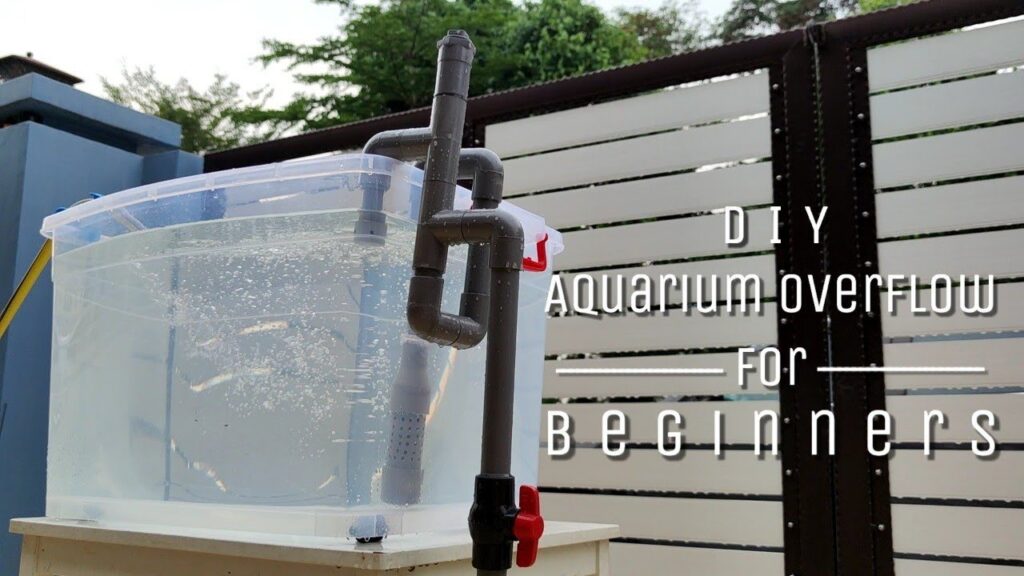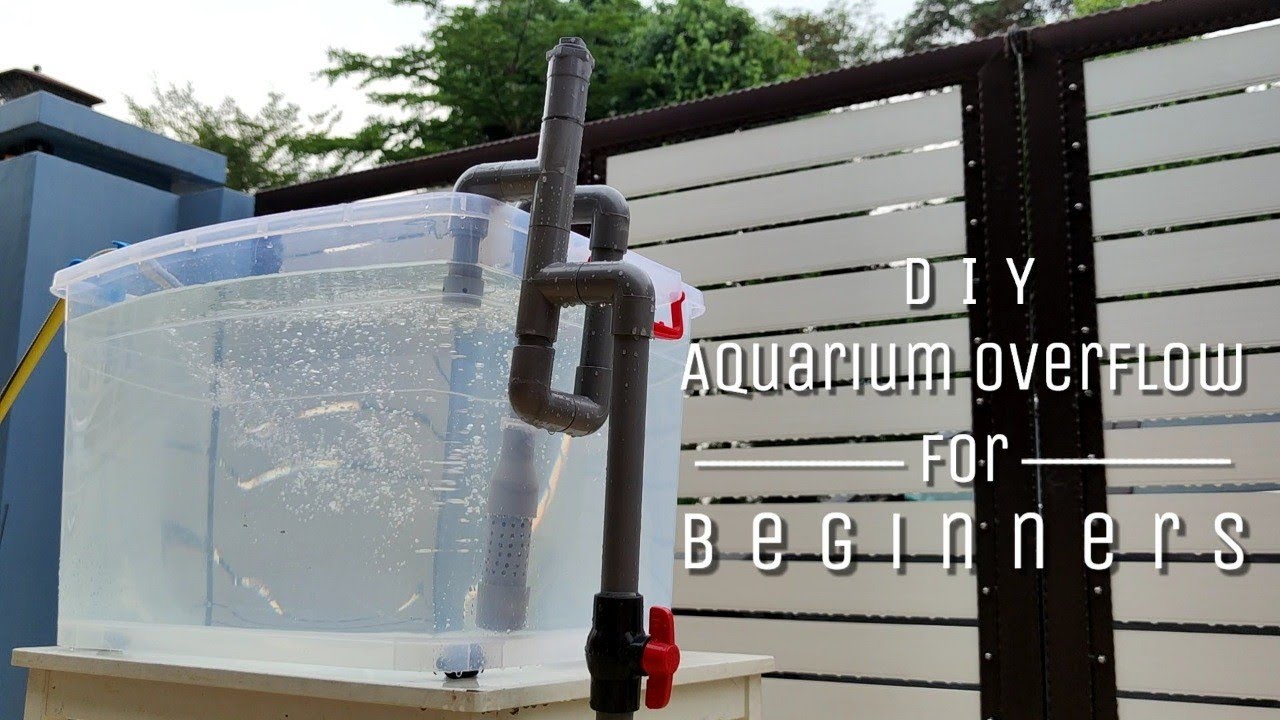
The Ultimate Guide to Acrylic Aquariums with Overflow Systems
For serious aquarists seeking clarity, durability, and advanced filtration, an acrylic aquarium with overflow is often the pinnacle of tank design. Unlike glass aquariums, acrylic offers superior optical clarity, allowing for a more vibrant and immersive viewing experience. The integrated overflow system further enhances water quality by efficiently removing surface scum and directing it to a sump for comprehensive filtration.
This comprehensive guide will delve into the intricacies of acrylic aquariums with overflow, covering everything from their advantages and disadvantages to installation, maintenance, and troubleshooting. Whether you’re a seasoned hobbyist or a newcomer to the world of advanced aquariums, this article will equip you with the knowledge you need to make an informed decision and successfully maintain your own acrylic aquarium with overflow.
What is an Acrylic Aquarium with Overflow?
An acrylic aquarium is a fish tank constructed from acrylic sheets, a type of transparent plastic. Acrylic aquariums are known for their strength, clarity, and ability to be molded into various shapes. An overflow system is a component integrated into the aquarium design that allows water to flow from the main display tank into a sump located below. This sump houses essential filtration equipment, such as protein skimmers, reactors, and refugiums, contributing to a healthier and more stable aquatic environment.
Key Components of an Overflow System
- Overflow Box: This is the structure inside the aquarium that collects surface water. It typically has a comb or teeth to prevent fish and large debris from entering the overflow.
- Standpipes: These pipes extend from the overflow box down to the sump. There are various standpipe designs, such as Durso, Herbie, and BeanAnimal, each with its own advantages in terms of noise reduction and flow control.
- Sump: The sump is a separate tank, usually located in the aquarium stand, that houses the filtration equipment. It also acts as a reservoir for water, helping to maintain a stable water level in the main display tank.
- Return Pump: This pump is located in the sump and pumps the filtered water back up to the main display tank.
- Plumbing: The plumbing connects all the components of the overflow system, ensuring a smooth and efficient flow of water.
Advantages of Acrylic Aquariums with Overflow
Acrylic aquariums with overflow offer several advantages over traditional glass aquariums, making them a popular choice among serious aquarists:
- Superior Clarity: Acrylic is significantly clearer than glass, allowing for a more vibrant and unobstructed view of the aquarium’s inhabitants.
- Increased Durability: Acrylic is much stronger than glass and is less likely to crack or shatter. This makes acrylic aquariums a safer option, especially for larger tanks.
- Lighter Weight: Acrylic is lighter than glass, making acrylic aquariums easier to move and install.
- Design Flexibility: Acrylic can be molded into various shapes and sizes, allowing for custom aquarium designs.
- Efficient Filtration: The overflow system efficiently removes surface scum and directs it to a sump for comprehensive filtration, resulting in improved water quality and a healthier environment for the aquarium’s inhabitants.
- Stable Water Parameters: The sump provides a larger water volume, which helps to buffer against fluctuations in water parameters such as temperature, pH, and salinity.
Disadvantages of Acrylic Aquariums with Overflow
While acrylic aquariums with overflow offer numerous advantages, there are also some potential drawbacks to consider:
- Higher Cost: Acrylic aquariums are typically more expensive than glass aquariums.
- Susceptibility to Scratches: Acrylic is more prone to scratching than glass. Special care must be taken when cleaning and maintaining an acrylic aquarium to avoid scratches.
- Potential for Warping: If not properly supported, large acrylic aquariums can warp over time.
- Complexity of Installation: Setting up an acrylic aquarium with overflow can be more complex than setting up a traditional glass aquarium, requiring careful planning and execution.
Choosing the Right Acrylic Aquarium with Overflow
When selecting an acrylic aquarium with overflow, consider the following factors:
- Size and Shape: Determine the appropriate size and shape of the aquarium based on the type of fish and invertebrates you plan to keep, as well as the available space in your home.
- Acrylic Thickness: Ensure that the acrylic is thick enough to withstand the water pressure. Consult with the aquarium manufacturer or a qualified aquarium professional for recommendations on acrylic thickness.
- Overflow Design: Choose an overflow design that is appropriate for your needs. Consider factors such as noise level, flow rate, and ease of maintenance.
- Sump Size: Select a sump that is large enough to accommodate all of your filtration equipment and provide adequate water volume.
- Manufacturer Reputation: Choose a reputable aquarium manufacturer with a proven track record of producing high-quality acrylic aquariums.
Installation and Setup
Installing an acrylic aquarium with overflow requires careful planning and execution. Here are some general steps to follow:
- Prepare the Stand: Ensure that the aquarium stand is level and strong enough to support the weight of the filled aquarium.
- Position the Aquarium: Carefully position the aquarium on the stand.
- Install the Overflow: Install the overflow box and standpipes according to the manufacturer’s instructions.
- Plumb the System: Connect the overflow to the sump using appropriate plumbing fittings and pipes.
- Install the Sump: Place the sump in the aquarium stand and connect the return pump to the plumbing.
- Leak Test: Fill the aquarium with water and check for leaks.
- Cycle the Aquarium: Cycle the aquarium to establish a healthy biological filter before adding fish and invertebrates.
Maintenance
Maintaining an acrylic aquarium with overflow requires regular cleaning and maintenance to ensure optimal water quality and a healthy environment for the aquarium’s inhabitants. Here are some essential maintenance tasks:
- Water Changes: Perform regular water changes to remove accumulated nitrates and other pollutants.
- Cleaning the Acrylic: Clean the acrylic with a soft cloth or sponge and a specialized acrylic cleaner to avoid scratches. Never use abrasive cleaners or materials.
- Cleaning the Overflow: Regularly clean the overflow box and standpipes to remove debris and prevent clogs.
- Maintaining the Sump: Regularly clean the sump and maintain the filtration equipment.
- Testing Water Parameters: Regularly test the water parameters (pH, ammonia, nitrite, nitrate, salinity) and adjust as needed.
Troubleshooting Common Issues
Here are some common issues that may arise with acrylic aquariums with overflow and how to troubleshoot them:
- Overflow Noise: Overflow noise can be reduced by using a Durso, Herbie, or BeanAnimal standpipe design.
- Clogged Overflow: A clogged overflow can be cleared by removing the debris or using a siphon to remove the blockage.
- Sump Overflow: A sump overflow can be prevented by ensuring that the return pump is not too powerful and that the sump has adequate water volume.
- Scratched Acrylic: Scratches on the acrylic can be minimized by using a specialized acrylic scratch remover. [See also: How to Remove Scratches from Acrylic Aquariums]
- Water Leaks: Water leaks should be addressed immediately by identifying the source of the leak and repairing it with appropriate sealant or plumbing fittings.
Conclusion
An acrylic aquarium with overflow is a significant investment that can provide years of enjoyment and a stunning display for your aquatic creatures. By understanding the advantages and disadvantages, choosing the right equipment, and following proper installation and maintenance procedures, you can create a thriving and beautiful aquatic ecosystem in your own home. The superior clarity and efficient filtration offered by these systems make them a top choice for discerning aquarists. Remember to always prioritize the health and well-being of your aquatic inhabitants by maintaining optimal water parameters and providing a stable and enriching environment. Investing in a high-quality acrylic aquarium with overflow is an investment in the long-term health and beauty of your aquatic hobby. With proper care, your acrylic aquarium will be a source of fascination and enjoyment for years to come.

